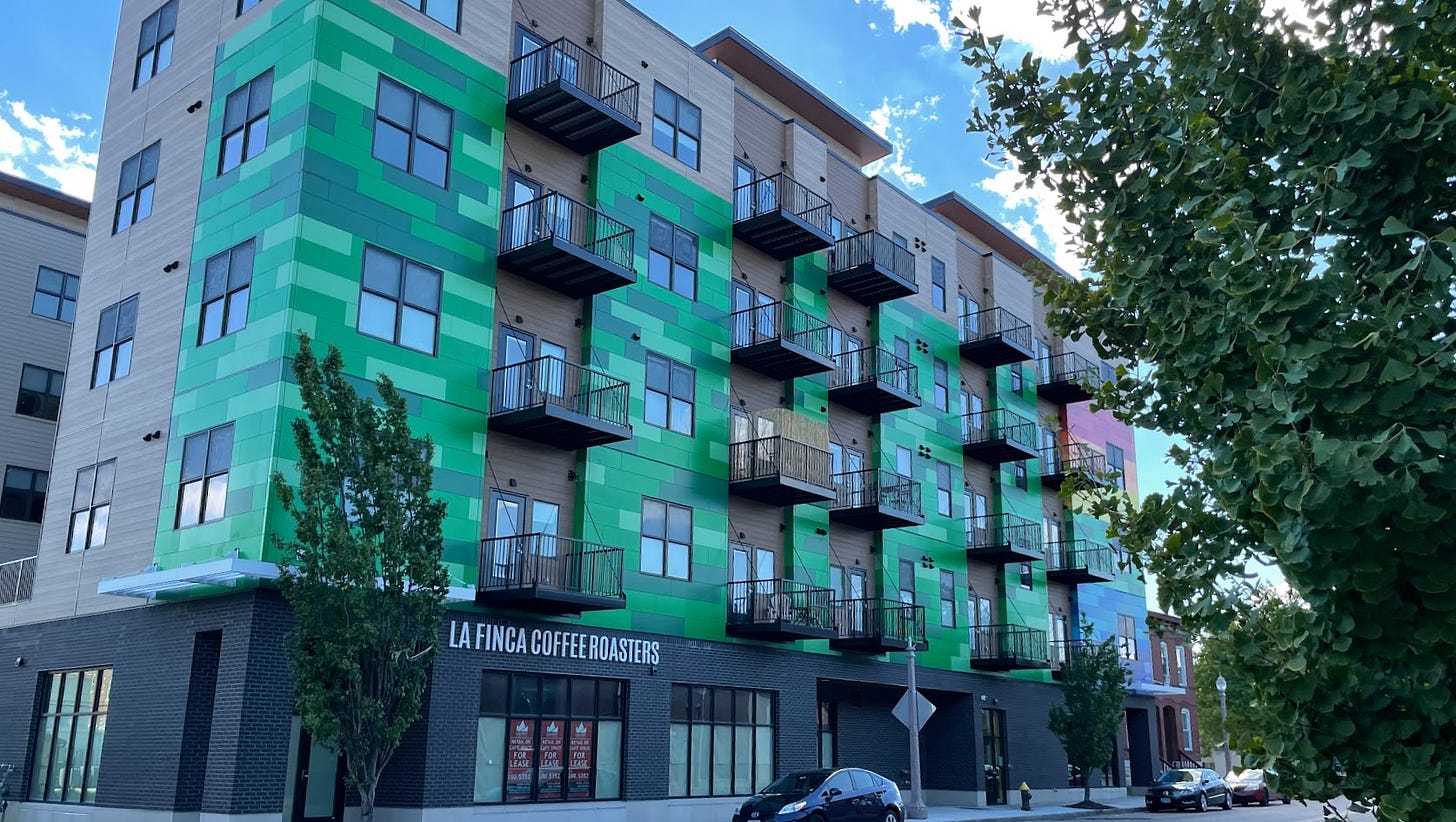It’s typically true that cities need more of just about all housing supply. More affordable housing? Of course! Workforce housing? That too! Even luxury housing. All of this helps build a cohesive foundation of housing choices that ultimately helps reduce price pressures and maximize flexibility.
What this conversation typically lacks is a focus on household types. When we advocate for new housing built in urban centers, we often see new, dense apartment buildings. These are fantastic. Even those 5 over 1’s that people tend to hate on for their designs – those are great too, and they often provide some fantastic retail storefronts and contribute to walkability.
But when we look at the type of housing that these buildings provide, we usually see a mix of studios, 1-bedroom, and 2-bedroom apartments.
These units are fantastic for singles and couples. Perhaps even a small family. I’d even advocate that the 2 and 3-bedroom units, where those exist, should be enough for families given how small even single-family homes used to be in the middle of the 20th century. (Fun fact, some estimates suggest that home sizes have more than doubled from 983 square feet back in 1950).
Most things are better now than they were in the 1950s. But, it is true that families used to be more open to sharing smaller spaces out of necessity. Bigger homes were not the norm. Children may have often shared bedrooms with each other.
Times have changed. Starting a family now often means finding a larger place. Usually that means a single-family home out in the suburbs. This is a dangerous, tricky trend for cities. It threatens their tax base, sidesteps their urban school districts, contributes to racial segregation, and worsens climate outcomes.
It would be a mistake to simply blame families. While it’s true that individual choices are part of the problem, these choices are made as part of a system of interwoven incentive structures. A family that really wishes to stay in the city might still opt to move because so many others have, resulting in school district disparities, worse services, or even a lack of units available that meet their criteria.
Demographers like Ness Sándoval, Professor of Political Science at Saint Louis University, have been investigating this trend and the decline of families in Saint Louis for years. His findings have showcased how a core element of urban population loss in Saint Louis – like in many other cities – is partly resulting inadequate housing choice for families. You should also definitely give Dr. Sándoval a follow.
So what do we do here?
Well, it seems clear that we need more family housing choices. That doesn’t have to mean exclusively single-family homes, however. That could (and I think should) include housing unit types that are cohesive with positive urban design. Attached townhomes, 3-bedroom apartments and condos, and densely packed, smaller single-family homes built in grid networks with mixed-use zoning configurations can go a long way.
If only it were so easy, though! In our economic system, we cannot really force developers to build only one type of housing.
We have a few good options here:
1. Incentivize the construction of better family-oriented homes (townhomes, large condos and apartments, and densely packed single-family homes)
2. Make those the easiest (and least expensive) housing types to build with pre-approved housing plans
By the way, you can read more about why pre-approved housing plans are great here!
3. Invest in family-oriented services to mitigate other factors that keep families away
Think recreation centers, parks, playgrounds, education, and public safety
The latter is the most difficult, but the first two parts are not just doable, but they’re really quite necessary for cities.
Families leaving the city probably aren’t coming back anytime soon. If we can keep families, however, we can stave off population loss and hopefully even increase population in the long run. We also just may be able to build cities that are fun, safe, and lively for everyone.
Children deserve to be able to enjoy walkable cities too, and a city built for anyone is better for everyone.





